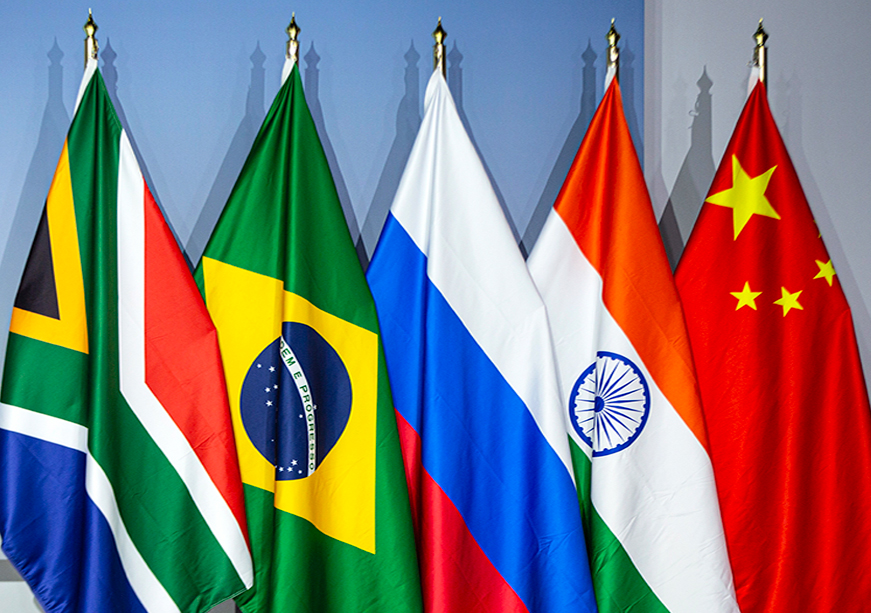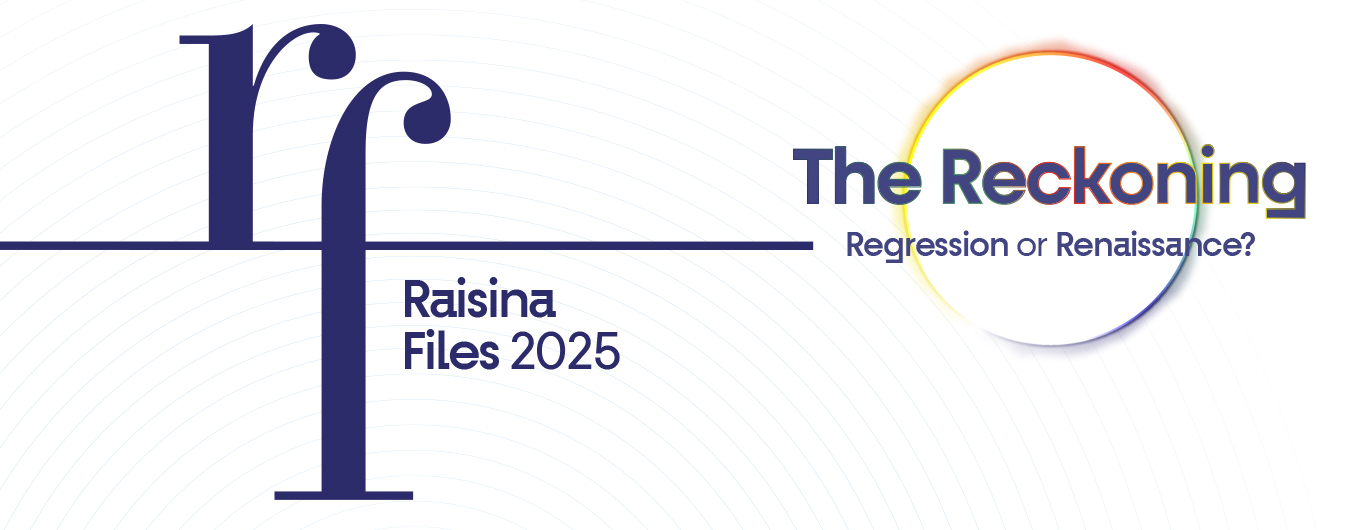
Image Source: Getty
This article is part of the series — Raisina Files 2025
In late 2023, the United States (US) established its first ever embassy in the Maldives. That same year, so too did Australia, joining a small but growing diplomatic corps in the northeast Indian Ocean island nation, that includes the United Kingdom, India, China, Japan, and Saudi Arabia.
The impetus was not economic—the tourism-dependent Maldives only has modest economic and people-to-people ties with both the US and Australia. Rather, the move reflected growing concern about the influence of China in the wider Indian Ocean region. It also recognised that small island states—just as much as global powers—play a vital role in shaping the region. As strategic competition heightens across the Indo-Pacific, how the Indian Ocean region looks in the coming years will depend partly on who engages with those small island states, and how they do so.
The Indian Ocean: Who’s There, and Who Cares?
The Indian Ocean region is extraordinarily diverse. Home to one-third of the world’s population (2.7 billion people), it encompasses 23 countries, ranging from global economies India, Indonesia, and France, to small island states like Mauritius and Seychelles, as well as fragile states like Yemen and Somalia. It also hosts some of the world’s most important shipping lanes—and precarious chokepoints—through which a third of the world’s container traffic and two-thirds of global oil shipments pass.[1] That makes it important to many countries, but especially China, which gets 80 percent of its oil and LNG via just one Indian ocean bottleneck—the Strait of Malacca.[2]
Still, the region, historically, received little international attention. In late 2023, however, the first of a series of Houthi-rebel-led attacks on commercial shipping in the Red Sea demonstrated not only the global significance of the Indian Ocean, but the increasing geopolitical fragmentation of the region. With over 100 attacks since then, most ships are now forced to take the costlier route around Southern Africa. However, Iranian, Chinese, and Russian ships continue to pass through the Red Sea freely.[3]
This growing presence of external players in the Indian Ocean is a notable change in the region. Previously, India and France were the dominant players. Though the US has maintained a military base at Diego Garcia in the central Indian Ocean since the late 1960s,[a] India has long seen itself as the region’s net security provider.[4] In its 2015 National Maritime Strategy, it identified the entire Indian Ocean (from eastern Africa to the Lombok Straits), as its “primary area of interest” and has a navy of around 150 ships and submarines positioned across the region.[5] Meanwhile, France—an Indian Ocean nation through its overseas territories of Réunion and Mayotte—is heavily engaged in the western Indian Ocean, where it is a substantial aid donor of around US$1.5 billion annually; it maintains a resident military presence of 2,000 personnel on Réunion.[6]
Over the last decade and a half, more states have boosted their Indian Ocean engagement, to access trade opportunities, garner strategic support, and maintain access to sea lines of communication. This includes Japan (a major development partner), Turkey (funding a port in Somalia, and finding new markets for its defence industry including in Maldives, Pakistan, and Sri Lanka),[7] and Saudi Arabia and the United Arab Emirates (both focused on aid and trade, as well as ties with Islamic countries like Comoros and Maldives).[8] The US is also enhancing its presence, re-opening its embassy in Seychelles in 2023[b] along with the new post in Maldives, and introducing in 2024 a bipartisan bill to Congress—the Indian Ocean Region Strategic Review Act—that calls for an examination of US interests in the region and identifies island states as crucial partners.[9]
Russia is there too. It established a port in Sudan in 2020, and is trying to get support for its war in Ukraine. Some analysts have also noted Russia’s support of anti-French sentiment in the region.[10] According to media reports, notorious arms dealer Viktor Bout (now a member of the Russian state parliament) was in talks in late 2024 with Houthi rebels to supply them with weapons—reports that Kremlin denied.[11]
China’s Indian Ocean Step-Up
Of all the countries with a footprint in the region, it is China that has garnered the most attention, both for the scale of its engagement, and the areas in which it has engaged— ports, communications, and security.
On scale, China remains unmatched by any other partner. It has embassies in every Indian Ocean country (including all the island states—the only country to do so), is a member or observer of all the regional organisations (including the Indian Ocean Rim Association), and is one of the most important economic partners for almost all countries in the region. Its investments in port and communications infrastructure have laid strong foundations for any future security needs. It established a military base in Djibouti in 2016 (that supports an estimated three to eight Chinese warships on rotation in the Indian Ocean at any given time) and has invested in or built 17 ports around the Indian Ocean rim (with Gwadar in Pakistan and Hambantota in Sri Lanka the most well-known, but also including smaller projects in Djibouti, Madagascar, Kenya and Tanzania).[12] Via Huawei, it has provided undersea cables to Seychelles, Comoros, Maldives, Sri Lanka and others that give it access to information.
In recent times, China’s surveillance vessels have increased the frequency of their ocean mapping exercises in the Indian Ocean, most controversially in the Bay of Bengal where Indian nuclear submarines operate.[13] Further, it is seeking to boost security cooperation with countries around the region, from its recent security pact with Maldives, to sending a military delegation to Sri Lanka in March 2024 to “promote bilateral security cooperation,” to its first ever bilateral military exercise with Bangladesh in May 2024.[14]
To be sure, China has not displaced India as the net security provider in the Indian Ocean region. Still, its gradual yet consistent buildup has given New Delhi and others pause for thought, as it shows the fragility of a region’s strategic balance.
The Agency of Small Island States
Amidst anxiety about a more robust Chinese presence in the Indian Ocean region, less attention has been paid to the perspectives and needs of Indian Ocean small island states. Yet, their views and choices matter greatly to the trajectory of the region.
First, small island states need partnerships because of their economic vulnerabilities, exposure to climate change effects, and massive Exclusive Economic Zones. For example, Mauritius (population: 1.2 million) is responsible for almost 1.3 million square kilometres of ocean. Near-neighbour India oversees double that area, at 2.4 million square kilometres— but with enormous human and economic resources behind it. In cases like these, the best option for small island states is to ask for help.
Small states are not passive, though. They have agency—albeit, uneven across island states—in who they work with, and who gets access to what (especially ports and logistical facilities). Some states have more options than others. Mauritius, for instance, comparatively more developed, has a close partnership with India and many other countries. Having far fewer options is Comoros—which has experienced some 20 coups, both successful and failed, since independence in 1975 and where the current president is accused of grooming his son for the presidency. In that island state, China is the leading creditor and a weighty donor.[15]
Second, as geopolitical competition intensifies, so too will small states’ commitment to non-alignment. However, the way that non-alignment is expressed will not always be to the liking of larger states. Thus, some in the Indian Ocean region, for example, abstained from United Nations (UN) votes on Ukraine on the grounds that it was a geopolitical conflict in which they should not interfere.[1c],[16]
Small states governments will also come under more pressure from anxious populations, who will increasingly see their countries’ security decisions as “choosing sides.” When Seychelles joined Operation Prosperity Guardian (the multinational effort to combat Houthi attacks in the Red Sea), its government came under public criticism for involving itself in what the Seychellois public perceived as a “Middle East issue.”[17] The Mauritian government’s decision to allow India to build a military facility on Agaléga Island received similar pushback, for giving a larger power access to sovereign territory.[18]
Third, small island states in the region do not necessarily see China as a threat, but rather another, sometimes better choice.[19] Maldives may be the starkest example of this perspective, with successive Maldivian governments since 2013 vacillating between pro-India and pro-China presidents.[20] India is also facing a broader backlash across the region— election campaigns in Maldives and Bangladesh in 2023 and 2024 were both marked by some version of an “India Out” campaign; Sri Lanka has had such protests in the past as well.[21] India’s efforts to establish a naval base on Seychelles’ Assumption Island were scotched by the Seychellois government in 2020.[22] Even in Mauritius—where 70 percent of the population are of Indian descent—former Prime Minister Pravind Jugnauth came under fire in parliament over several years for being too “pro-India”.[23]
Where to Next?
The future of the Indian Ocean region looks much more unstable, and uncertain, than it did a decade ago. It will need more sustained and coordinated engagement from the international community than it has ever had before. More importantly, if such engagement is to be impactful, it must include island states and address the issues that matter most to them—climate change, maritime domain awareness, regional economic integration, and human capacity building. As bigger players like India, France, Japan, the US, the UK, the EU, and Australia seek to work together in the region, they may want to consider developing integrated Indo-Pacific Island strategies. In doing so, small island state voices must be at the table.
It will not be easy. The diversity of the region along with weak regional architecture makes doing things collectively in the Indian Ocean region difficult; entrenched habits of cooperation, present in the Pacific Islands context or Southeast Asia, are absent in the Indian Ocean. But the price of inaction could be high. For those countries invested in maintaining stability in the Indian Ocean (both from within and external to the region), listening more closely to small island states will be a vital piece of the puzzle.
Endnotes
[a] The military base has been the subject of a long running sovereignty dispute between Mauritius and the UK. At the height of the Cold War in 1965, the UK detached the Chagos archipelago from its then-colony of Mauritius, three years before Mauritius gained its independence. The UK renamed the archipelago the British Indian Ocean Territory, forcibly removed Chagos islanders to Mauritius and Seychelles, and leased the island of Diego Garcia to the US in return for a US$14-million discount on Polaris nuclear missiles. In the years ahead, Diego Garcia became a critically important US military asset—essential for power projection into the Indian Ocean and a staging point for operations in the Middle East including Afghanistan and Iraq after 9/11. In late 2024, the UK and Mauritius governments reached a deal to return the Chagos Archipelago to Mauritius, with the UK to exercise Mauritius’ sovereignty over the island of Diego Garcia for a further 99 years. But following the US election, the UK announced that it would delay signing off on the deal until the new Trump administration has had an opportunity to consider it.
[b] The original US embassy in Seychelles closed in 1996, in tandem with the closure of a US Air Force Satellite Control Network tracking station (one of nine global tracking stations that assisted the National Aeronautics and Space Administration’s shuttle operations). For the next 27 years, the US relationship with Seychelles was managed from its embassy in Mauritius.
[1c] These countries include Bangladesh, South Africa, Ethiopia, Sri Lanka, Pakistan, and India.
[1] Hon. Penny Wong, “Keynote Address to the 7th Indian Ocean Conference,” Perth, February 9, 2024, https://www.foreignminister.gov.au/minister/penny-wong/speech/keynote-address-7th-indianocean- conference
[2] Chen Aizhu and Meng Meng, “China Crude Oil Imports Shatter Record, Top U.S. Intake,” Reuters, April 12, 2017, https://www.reuters.com/article/china-economy-trade-crude-idUSL3N1HK1DG?rpc=401&.
[3] “Yemen’s Houthis Release Crew of Seized Ship after Gaza Ceasefire Deal,” Al Jazeera, January 22, 2025, https://www.aljazeera.com/news/2025/1/22/yemens-houthis-release-crew-of-seized-ship-aftergaza- ceasefire-deal
[4] Kate O’Shaughnessy, “The UK Deal on Diego Garcia is Positive, But It Won’t Reverse Declining Support for the Rules-Based Order,” The Interpreter, October 8, 2024, https://www.lowyinstitute.org/the-interpreter/uk-deal-diego-garcia-positive-it-won-t-reversedeclining- support-rules-based-order; “UK stalls Chagos Islands Deal Until Trump Administration Can ‘Consider Detail’,” The Guardian, January 16, 2025, https://www.theguardian.com/world/2025/jan/15/uk-chagos-islands-handover-mauritius-donaldtrump- diego-garcia.
[5] Ministry of Defence, Government of India, “What Are the Current Force Levels of the Indian Navy?,” https://mod.gov.in/faqs/q-1-what-are-current-force-levels-indian-navy-what-are-ongoing-projectswhat- steps-are-being
[6] Hugh Piper and Kate O’Shaughnessy, “How Australia Can Work with France in the Western Indian Ocean,” The Strategist, July 12, 2023, https://www.aspistrategist.org.au/how-australia-can-work-with-france-in-the-western-indianocean/; “Development Cooperation Profiles,” Organisation for Economic Cooperation and Development, June 17, 2024, https://www.oecd.org/en/publications/2023/06/development-co-operation-profiles_17afa013/fullreport/ component-20.html#section-d1e14956-9f6d40b786
[7] Cheuk Yui Kwong, “Turkey’s Influence Grows Eastwards. That’s Welcome,” The Strategist, April 22, 2024, https://www.aspistrategist.org.au/turkeys-influence-grows-eastwards-thats-welcome/
[8] Darshana M. Baruah, Nitya Labh, and Jessica Greely, “Mapping the Indian Ocean Region,” Carnegie Endowment, June 15, 2023, https://carnegieendowment.org/research/2023/06/mapping-the-indian-ocean-region?lang=en
[9] Nilanthi Samaranayake, “Connecting West and East: Indian Ocean Security and the US Indo-Pacific Strategy,” Asia Pacific Bulletin, October 18, 2024, https://www.eastwestcenter.org/publications/connecting-west-and-east-indian-ocean-security-andus- indo-pacific-strategy; Ryan Adeline, “Seychelles: Indian Ocean Security and the US Indo-Pacific Strategy,” East West Center, October 18, 2024, https://www.eastwestcenter.org/publications/seychelles-indian-ocean-security-and-us-indo-pacificstrategy.
[10] Baruah, Labh, and Greely, “Mapping the Indian Ocean Region”; Elisabeth Braw, “Russia’s Most Infamous Arms Dealer is Backing Maritime Terror,” Foreign Policy, October 22, 2024, https://foreignpolicy.com/2024/10/22/russia-arms-dealer-viktor-bout-houthis-red-sea-yemen/; Dani Madrid-Morales, Herman Wasserman, Saifuddin Ahmed, “Chinese and Russian Disinformation Flourishes in Some African Countries – Anti-US Sentiment Helps it Take Hold,” The Conversation, September 4, 2024, https://theconversation.com/chinese-and-russian-disinformation-flourishes-in-some-africancountries- anti-us-sentiment-helps-it-take-hold-238101; “Mapping a Surge of Disinformation in Africa,” Africa Centre for Strategic Studies, March 13, 2024, https://africacenter.org/spotlight/mapping-a-surge-of-disinformation-in-africa/; Frederic Grare, “Russia, Azerbaijan Exploit New Caledonian Strife Against France; China Stays Mum,” The Strategist, June 12, 2024, https://www.aspistrategist.org.au/russia-azerbaijan-exploit-new-caledonian-strife-against-francechina- stays-mum/
[11] “Baku Hosts Conference on “Réunion’s Independence: View on France’s Colonial Legacy and Path to Sovereignty”,” Azerbaijan State News Agency, January 21, 2025, https://azertag.az/en/xeber/baku_hosts_conference_on_reunion_039s_independence_view_on_ france_039s_colonial_legacy_and_path_to_sovereignty-3381679
[12] Benjamin Reilly and Peter Dean, “Indian Ocean Security Means More Will Be Asked of US Allies,” East West Bulletin, February 22, 2024, https://www.eastwestcenter.org/publications/indian-ocean-security-means-more-will-be-asked-usallies; Saeeduddin Faridi, “China’s Ports in the Indian Ocean,” Gateway House, August 19, 2021, https://www.gatewayhouse.in/chinas-ports-in-the-indian-ocean-region/.
[13] Kate O’Shaughnessy, “China’s Western Indian Ocean Step Up,” Australian Outlook, October 16, 2023, https://www.internationalaffairs.org.au/australianoutlook/chinas-western-indian-ocean-step-up/; David Brewster, “Mapping the Oceans is the New Front in the Battle for Influence in the Indian Ocean,” The Interpreter, March 27, 2024, https://www.lowyinstitute.org/the-interpreter/mapping-oceans-new-front-battle-influence-indianocean.
[14] William Yang, “China, India Compete for Influence in Indian Ocean,” Voice of America, March 19, 2024, https://www.voanews.com/a/china-and-india-compete-for-influence-in-indian-ocean/7533717. html; Frederic Grare, “Hasina’s Downfall May Create New Opportunities in Bangladesh for China,” The Strategist, August 13, 2024, https://www.aspistrategist.org.au/hasinas-downfall-may-create-new-opportunities-in-bangladeshfor- china/.
[15] CIA World Factbook, “Comoros,” January 16, 2025, https://www.cia.gov/the-world-factbook/countries/ comoros/; Gloria Aradi, “Comoros President Azali Assoumani Wins Fourth Term in Disputed Poll,” BBC News, January 18, 2024, https://www.bbc.com/news/world-africa-68002934; Direction générale du Trésor, “La Chine, Premier Bailleur Bilatéral aux Comores,” chrome-extension://efaidnbmnnnibpcajpcglclefindmkaj/https:/www.tresor.economie.gouv.fr/ PagesInternationales/Pages/2d677a2f-f7a7-4236-9efd-c73c6207c6fa/files/73992267-e3eb-4442-9d67- 7777f2aed1ab.
[16] “UN Tells Russia to Leave Ukraine: How Did Countries Vote?,” Al Jazeera, February 24, 2023, https://www.aljazeera.com/news/2023/2/24/un-tells-russia-to-leave-ukraine-how-did-countriesvote.
[17] Adeline, “Seychelles: Indian Ocean Security and the US Indo-Pacific Strategy”.
[18] Kate O’Shaughnessy, “India’s Battle Over Disinformation in the Indian Ocean,” The Strategist, May 3, 2023, https://www.aspistrategist.org.au/indias-battle-over-disinformation-in-the-indian-ocean/.
[19] Pia Dannhauer, “Australia’s Strategic Messaging Challenge in Southeast Asia,” Asialink, November 28, 2024, https://asialink.unimelb.edu.au/diplomacy/article/australias-strategic-messaging-challengesoutheast- asia/.
[20] Urmika Deb, “Maldives Walks a Diplomatic Tightrope with India,” The Strategist, January 31, 2024, https://www.aspistrategist.org.au/maldives-walks-a-diplomatic-tightrope-with-india/.
[21] Athaulla A. Rasheed, “Voters Back Maldives Change in Foreign Policy,” The Diplomat, April 26, 2024, https://thediplomat.com/2024/04/voters-back-maldives-change-in-foreign-policy/; Faiz Ahmad Taiyeb, “An ‘India Out’ Campaign Gathers Pace in Bangladeshi Social Media,” The Diplomat, March 15, 2024, https://thediplomat.com/2024/03/an-india-out-campaign-gathers-pace-in-bangladeshi-socialmedia/; “India Out” Kicks Off in Sri Lanka?,” Sri Lanka Guardian, May 3, 2024, https://slguardian.org/india-out-kicks-off-in-sri-lanka/; Ashok K. Behuria, “Visit of Sri Lankan President to India: Issues at Stake,” International Centre for Peace Studies, December 24, 2024, https://www.icpsnet.org/issuebrief/Visit-of-Sri-Lankan-President-to-India.
[22] Ashton Robinson, “Seychelles: Washington Comes Calling,” The Interpreter, September 18, 2023, https://www.lowyinstitute.org/the-interpreter/seychelles-washington-comes-calling.
[23] Kavina Ramparsad, “Pravind Jugnauth à Reza Uteem: “What have you got against India?,” Defi Media, July 19, 2022, https://defimedia.info/pravind-jugnauth-reza-uteem-what-have-you-got-against-india.
The views expressed above belong to the author(s). ORF research and analyses now available on Telegram! Click here to access our curated content — blogs, longforms and interviews.




 PREV
PREV



